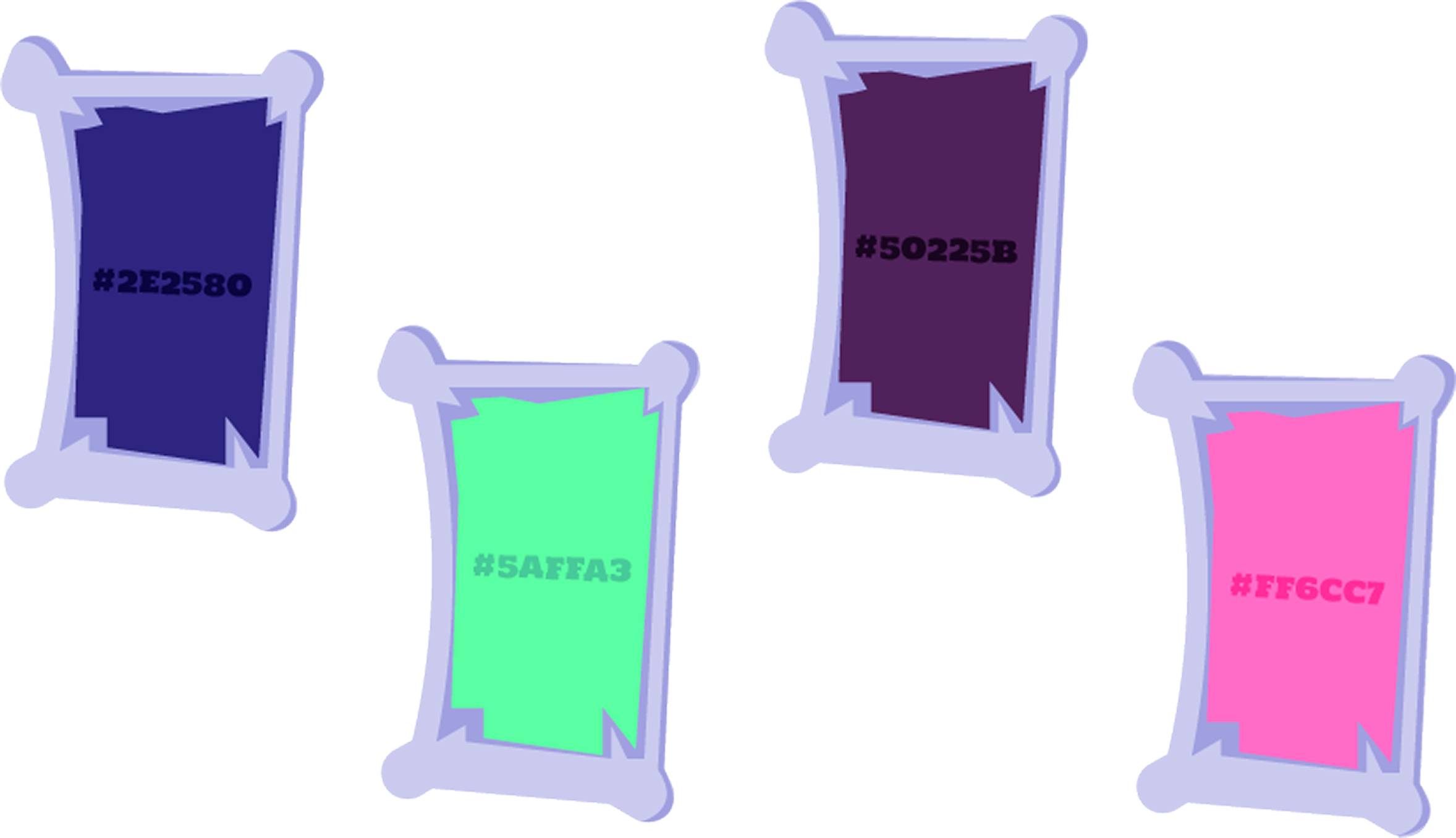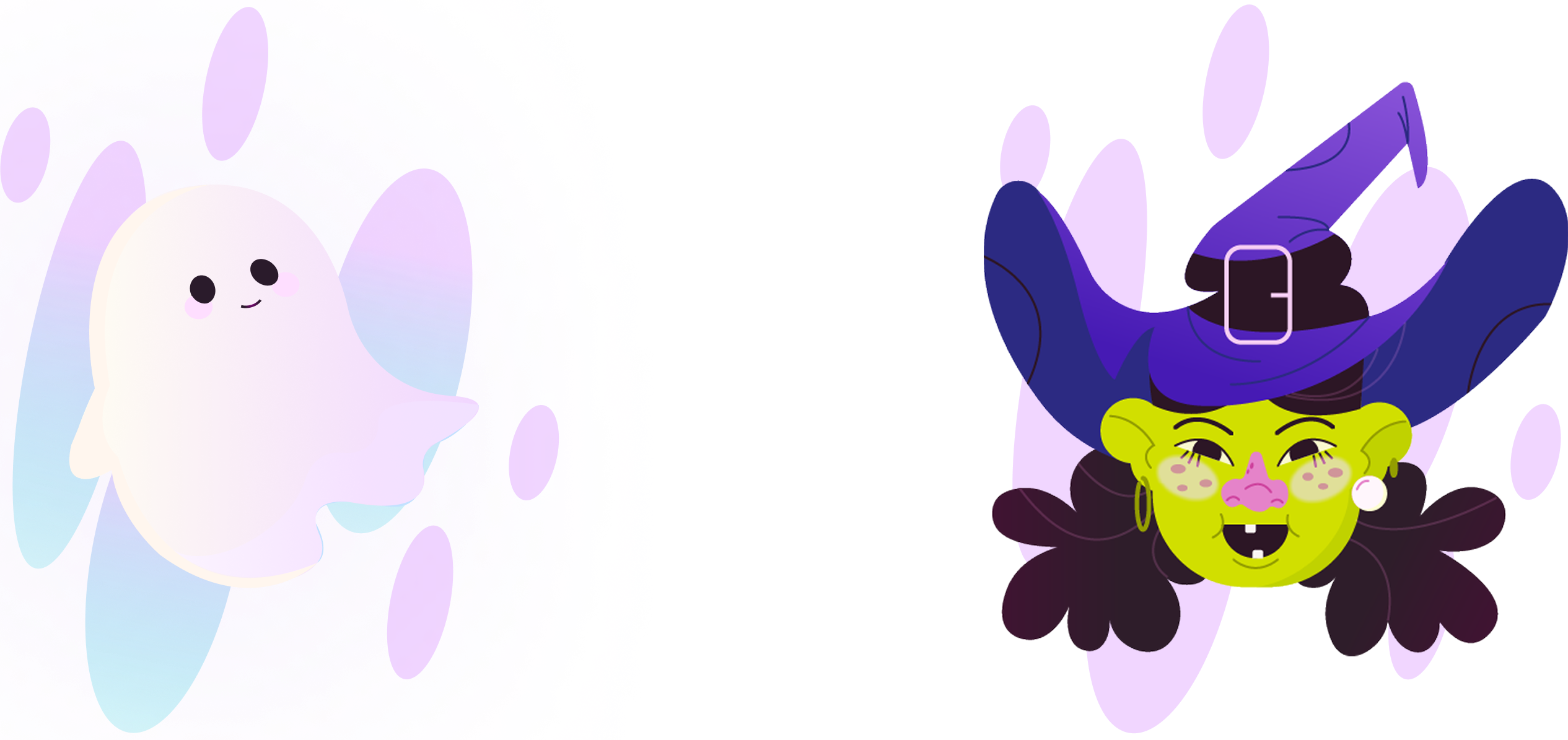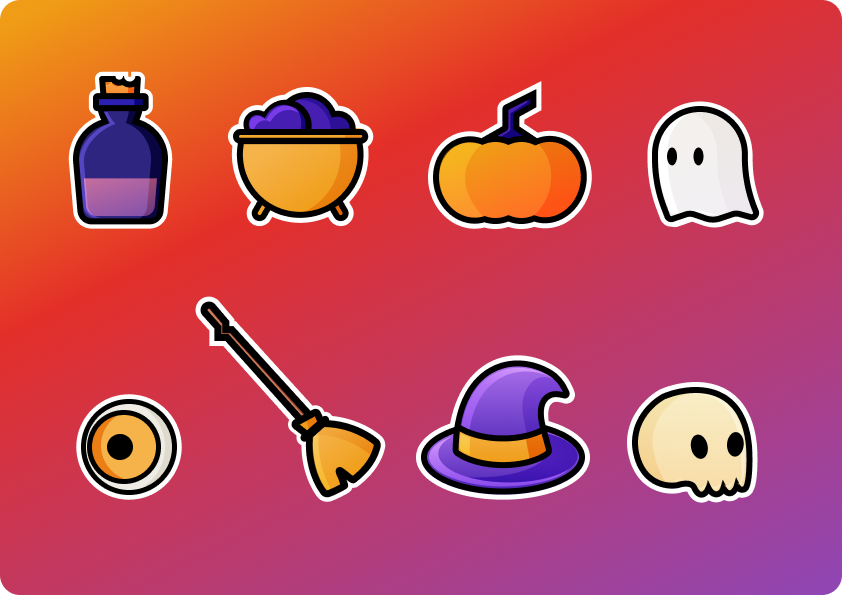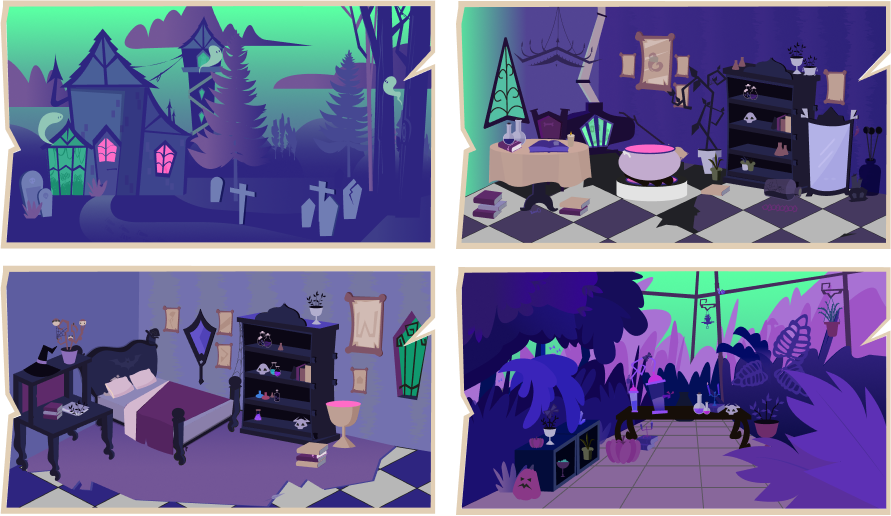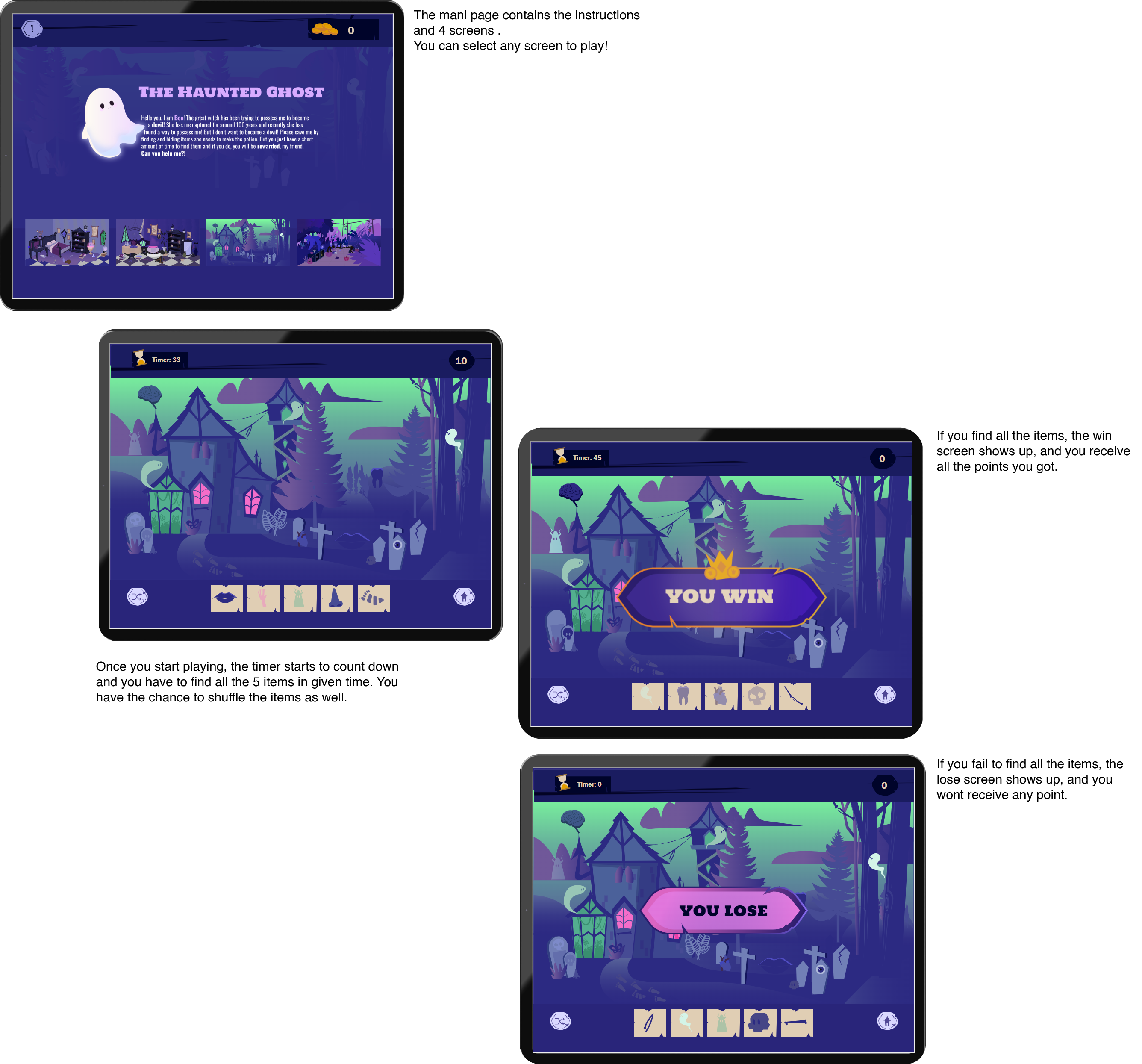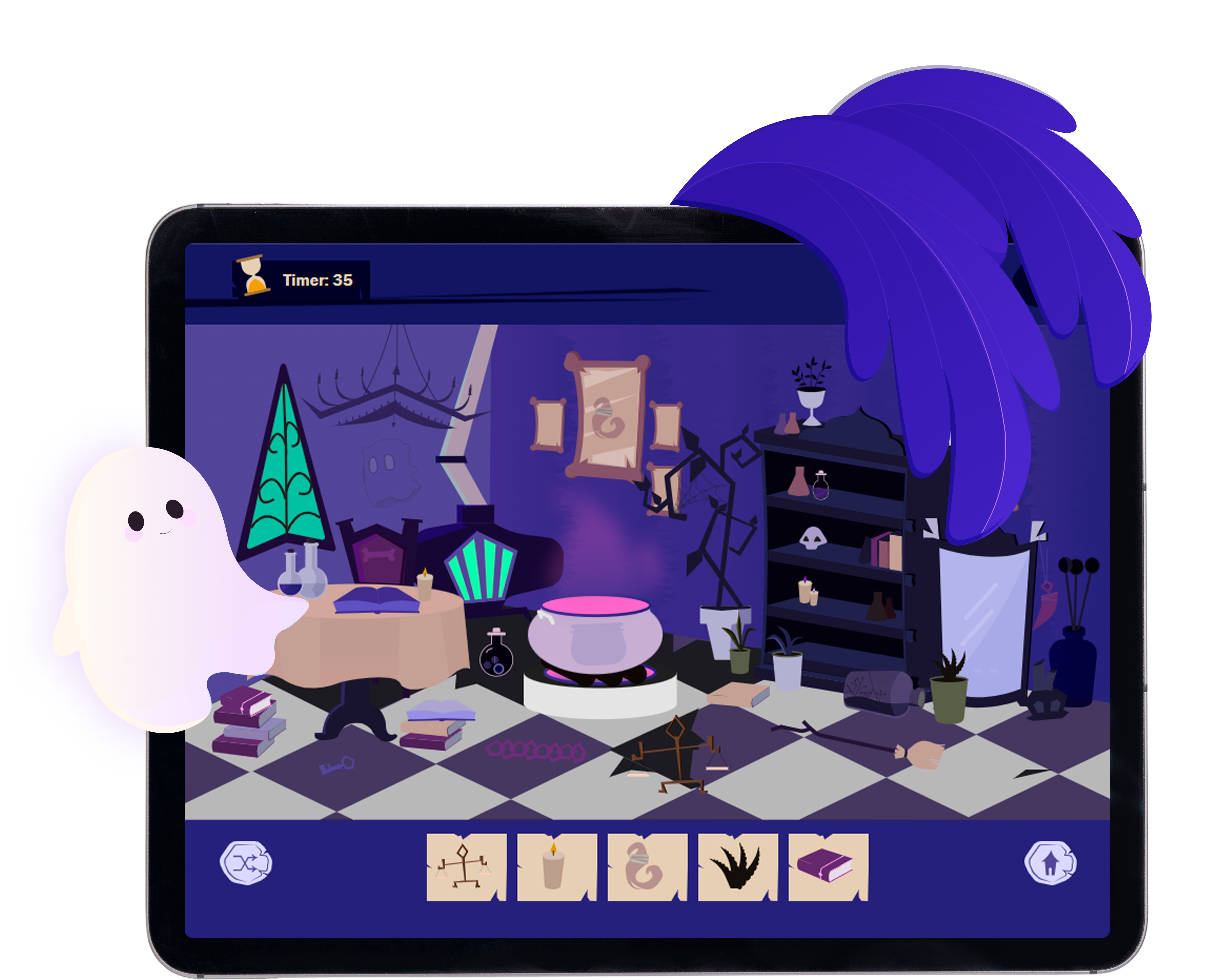
👻 Overview
The Hunted Ghost is a story-driven puzzle game that follows BOO, a ghost being possessed by a wicked witch to become a demon. Players are challenged to find 5 hidden items within a time limit in each scene to rescue BOO from this curse. The game is designed to blend eerie visuals, rewarding interactions, and intuitive UI to create an engaging experience for casual gamers.
Role
Visual Design, Game Design
Tools
Adobe Illustrator, Figma, Adobe Aftereffect, Adobe Photoshop, HTML/CSS/JS
Scope
Solo project — research, ideation, design, and coding
